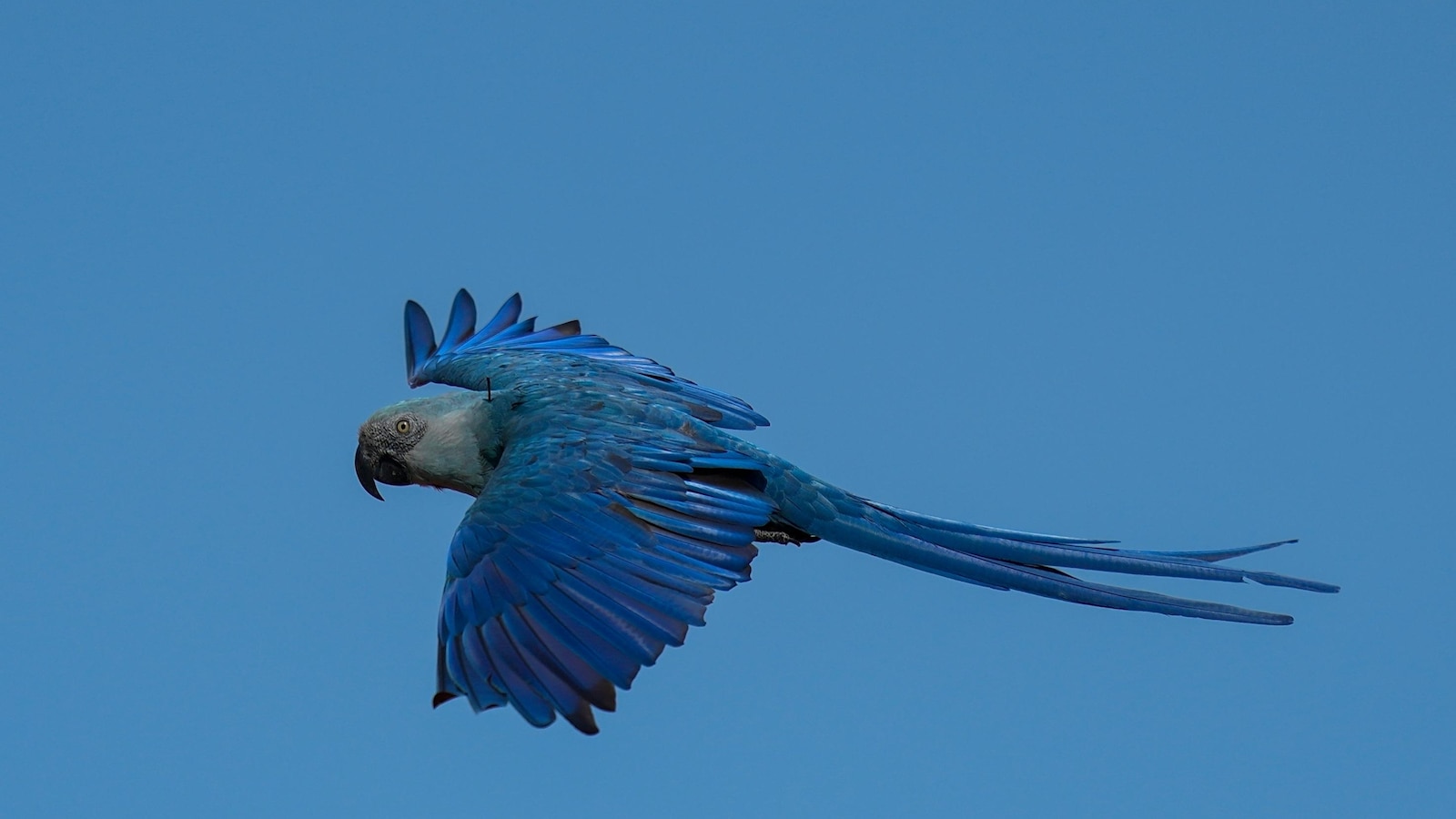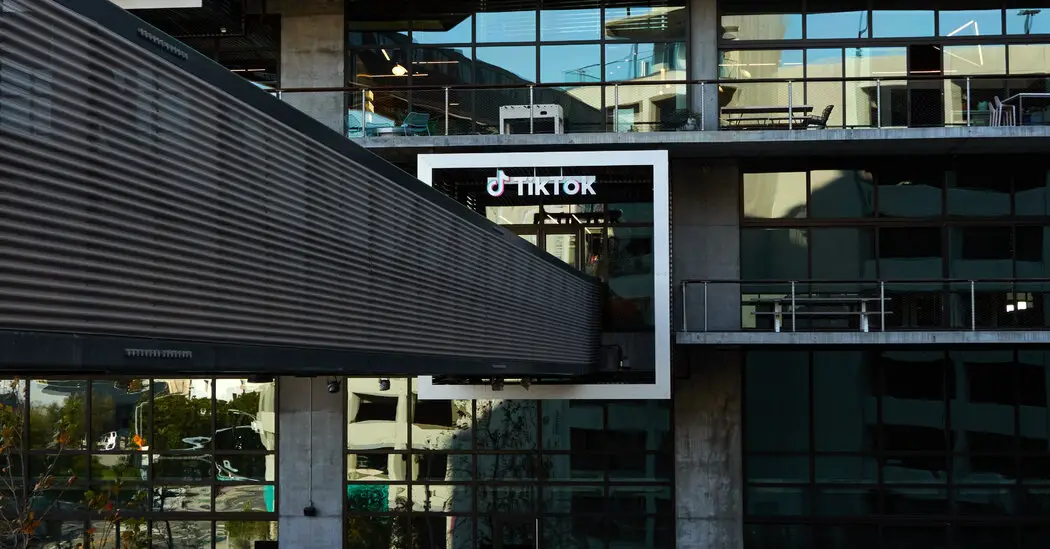
CURACA, Brazil — All Spix’s macaws are majestically blue in the blazing sun of Brazil’s Northeast, but each bird is distinct to Candice and Cromwell Purchase. As the parrots soar squawking past their home, the couple can readily identify bird No. 17 by its smooth feathers and can tell No. 16 from No. 22, which has two beads attached to its radio collar.
This familiarity offers a glimpse of the South African couple’s commitment to saving one of the world’s most critically endangered species. The parrot — endemic to a small fraction of the Sao Francisco River basin and already rare in the 19th century — was declared extinct in the wild in 2000, when a lonely surviving male disappeared following decades of poaching and habitat destruction from livestock overgrazing. The few remaining birds were scattered in private collections around the world.
For the Spix’s macaws, immortalized in the popular animated “Rio” films, the road back from the edge of extinction has been a long, winding and bumpy one.
Threats that had devastated the Spix’s macaws still loom, and the birds now face another menace: climate change. The species’ original territory overlaps what has recently been officially designated Brazil’s first arid climate region.
The drier conditions worry Cromwell Purchase because of their potential impact on habitat for the few surviving Spix’s macaws.
“A dry area only gets rain for a very short period of the year. A drought in that period might go an entire year before you’re going to get your next rain,” said Purchase, a tall and slim 46-year-old. “The animals are adapted to harsh environments, but they are on the edge. Any small increment of change will decimate populations.”
In November, two federal research institutes released a study of rainfall water loss in plants and soil between 1960 and 2020. It showed that northern Bahia state, including Curaca, where the Spix’s macaws are trying to survive, is now consistent with a desert area. It also identified the expansion of semi-arid climate in the Northeast, where nearly 55 million people live.
“If the planet is warmer, there will be much greater evaporation. So, the water leaves the environment and generates aridity,” the director of Brazil’s anti-desertification efforts, Alexandre Pires, told The Associated Press.
Since 2005, semi-arid area in Brazil has expanded by 300,00 square kilometers (116,000 square miles) and is now roughly the size of three Californias. The government is set to announce measures to avoid desertification by promoting better management of soil and other natural resources in the region.
In the face of the changing climate and numerous challenges, at every turn the Purchases have dedicated the better part of their adult lives to breeding Spix’s macaws and reintroducing them into nature. The journey first took the biologists to work with a private collection on an oasis in Qatar. When the birds were transferred to a nonprofit organization, the couple moved with them to Germany.
Over the past four years, their efforts have been centered in the rural area of Curaca, a nondescript town of 34,000 people.
Under an agreement between the Brazilian government and the German nonprofit Association for the Conservation of Threatened Parrots, 52 Spix’s macaws were sent in 2020 to Brazil on two charter flights. Federal police escorted them to breeding and reintroduction facilities accessible by a 1-hour drive on a rough dirt road, where the Purchases live and work for the nonprofit.
Two years later, 20 Spix’s macaws were released in the wild, along with 15 wild-sourced Blue-Winged macaws, whose purpose was to “teach” them how to fly, avoid risks and forage. Last year, two Spix’s macaw chicks were born in freedom — the first ones in decades— but they didn’t survive.
All released birds were equipped with radio collars designed to resist macaws’ strong bills. Each collar has an antenna. The Purchases and their assistant check the birds’ locations three times a day.
Half of the Spix’s macaws have died, mostly from predation, or disappeared. Now, the remaining ones live within 5 kilometers (3 miles) of the facilities, a compound that includes the couple’s house and a U-shaped flight-and-release cage that’s 47 meters (51 yards) long.
In March, three more of the light pale blue chicks were born in the wild. Not only did they survive, but one of them also flew for the first time last week, a major breakthrough.
“This event is so important as it shows how comfortable the parents are in their wild environment,” Candice Purchase said in a text message. “A remarkable achievement for the birds and an incredible success for the release.”
To mitigate the impacts of desertification, the German parrot nonprofit partnered with a private company, Blue Sky Caatinga, to promote reforestation of 24,000 hectares (59,300 acres) in the territory of Spix’s macaw. This initiative involves engaging small farmers who heavily depend on goat raising.
Unlike depictions in the animated films “Rio” and “Rio 2,” which brought attention to the Spix’s macaw extinction threat, the parrot’s natural habitat is far from Brazil’s most famous city, Rio de Janeiro, and the Amazon rainforest. It lives among the sparse, thorny, low caatinga vegetation that often loses greenery during dry periods. And the bird uses the Caraibeira, a towering evergreen tree that grows near small intermittent creeks, for nesting and food. During breeding season, the trees allow the pairs to conserve energy and avoid flying long distances to feed.
When the macaws first arrived from Germany, they were offered various foods from the wild. “We found that it took a while for the birds to recognize them as food,” Purchase said. “But the Caraibeira tree produces a seed pod, almost like helicopter seeds. The Spix’s had never seen anything like it before. We put those in the cages and some picked them up and immediately knew how to open them and eat the kernel inside, which was totally remarkable and took us by surprise.”
The project also faces challenges outside the natural world. On May 15, the federal government informed the nonprofit that it would terminate the agreement, which expires on June 5. In a statement to the AP, Brazil’s federal environmental agency said it discovered that, in 2023, the nonprofit transferred Spix’s macaws from its center in Germany to other countries without its consent. The agreement will not be renewed until the situation is clarified, but the government said the nonprofit can continue its reintroduction work. The project’s funding comes from international donors.
The strained relations have put a pause on plans to release 20 parrots per year over 20 years. “No release in 2023 and now looking like a 2024 release is unlikely. It would be a shame for the project to fail because of government politics,” Purchase said.
There are approximately 360 Spix’s macaws in captivity worldwide, with 46 in Curaca.
Despite the hurdles, many residents of Curaca, even if they never have never seen a Spix’s macaw, expect them to soon return to flying over the region and not just be seen in countless paintings that made the parrot part of the city’s identity.
“The project is already a success. They are free,” said Maria de Lourdes Oliveira, whose family leased part of their land for reforestation. “The most difficult thing was to arrive in Brazil. I cried when I saw them going to freedom and flapping their wings.”
___
This story has been corrected to state that the birds were moved, not sold, to a nonprofit in Germany, and language was changed to indicate the first release into the wild was in 2022, not 2021.
___
The Associated Press’ climate and environmental coverage receives financial support from multiple private foundations. AP is solely responsible for all content. Find AP’s standards for working with philanthropies, a list of supporters and funded coverage areas at AP.org.








